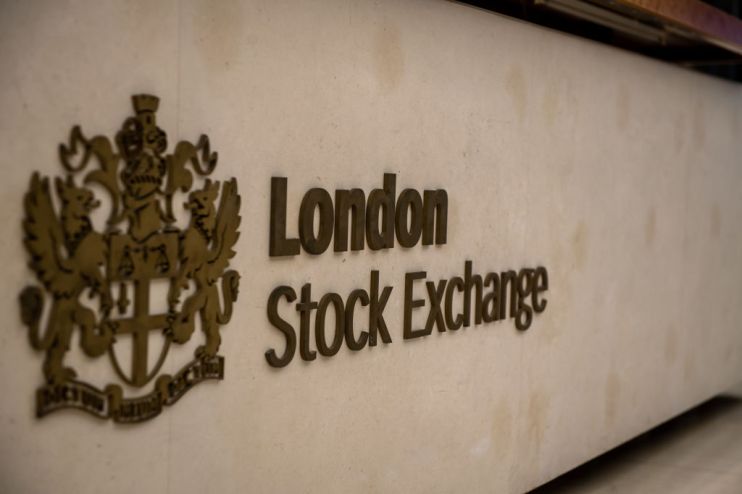As the FTSE 100 turns 40, what does the future hold for London’s leading blue-chip index?

London’s FTSE 100 will turn 40 tomorrow, but it’s hardly a happy birthday for the index. As it approaches middle age, there are growing concerns about its relevance in the increasingly US-dominated market landscape.
A lot has changed since the FTSE 100 started trading in 1984. Just 14 members of the original FTSE are still in the index under the same or a similar name. These include Shell, BP and Rio Tinto. 12 more firms remain in the index, under different names.
Many others have been acquired by foreign firms. These include several household names like Cadbury, Boots, and Scottish & Newcastle Breweries. These were taken over by Kraft, Walgreens and Heineken respectively.
Others have fallen by the wayside, hit by various crises.
Dalgety, a food-focused conglomerate, sold most of its assets after it was damaged by the breakout of BSE, also known as “mad cow disease,” in the 1990s. Trafalgar House, another conglomerate with interests in a range of sectors, floundered after the 1990 recession under a mountain of debt. It was eventually picked up by Norwegian firm Kværner.
The FTSE 100: The beginning of a new era
When it was launched, the new index was a big upgrade on the previous benchmark, the FT 30.
The FTSE’s predecessor was selected by writers at the Financial Times and was only updated if companies were taken over or went bust. All companies in the FT 30 were given equal weighting, meaning individual share price movements could heavily distort the index.
The new SE 100, as it was upon launch, quickly replaced the stolid FT 30 as the main indicator of the health of London’s markets.
Six weeks after the launch, however, the FT’s initials were added after pressure from the newspaper’s outraged leadership team. They had not been told about the FTSE’s launch and were angry that their own index was being replaced.
The digitised index was updated second-by-second and its launch was perfectly timed. Just a couple of years later, Margaret Thatcher’s deregulatory push sparked a huge expansion of the financial sector and sent the FTSE rocketing higher.
In December 1999, the FTSE 100 climbed above 6,900 points – having launched at 1,000 points.
24 years, a financial crisis, and a pandemic later, the FTSE 100 index has only climbed another 800 points. It now trades around 7,700.
This has hit investors. After posting annualised returns of 15.9 per cent in the 1980s and 11.1 in the 1990s, the FTSE 100 has seen annual returns of just 0.4 per cent since 2000.
This compares to 2.9 per cent for MSCI Europe ex-UK index and 6.1 per cent for the S&P 500 in sterling terms since 2000.
Dividends rescue returns
“An idyllic youth has given way to an austere adulthood for the UK’s headline index,” Laith Khalaf, head of investment analysis at AJ Bell, said.
However, Khalaf noted that annualised returns were a poor measure for assessing the FTSE’s success because it excludes dividends and is vulnerable to the impact of changing exchange rates.
Sterling has weakened against the dollar and euro considerably in recent years and so investors in overseas indices have seen their returns lifted when converting back into pounds.
When dividends are reinvested and returns are calculated according to local currencies, the FTSE 100’s return since 2000 is more in line with rivals in Europe. On this basis, the FTSE 100 has returned 4.1 per cent per annum since 2000, compared to 3.9 per cent from the MSCI Europe ex-UK index.
The US remains ahead, with investors receiving an annualised return of 7.1 per cent from the S&P 500.
“It’s true that the FTSE 100 has fallen behind the S&P 500 since the turn of the century, but this looks to owe more to American exceptionalism than UK degeneration,” Khalaf said.
As it celebrates its fortieth birthday, the FTSE 100 is facing something of a mid-life crisis. Susannah Streeter, head of money and markets at Hargreaves Lansdown, said the index “appears to be suffering a confidence crisis.”
While other markets in both the US and Europe saw strong gains in 2024 (the Nasdaq index rose over 400 per cent while the German DAX added 20 per cent), the FTSE 100 climbed just 3.7 per cent.
A slew of firms have abandoned the UK’s listed markets in recent years and the bourse faced a dearth of IPOs in 2023. It has also struggled to attract tech firms. Revealingly, the FTSE 100 has no more tech firms now than when it launched in 1984.
A range of reforms have been proposed to encourage investment into the UK’s listed markets. These include changes to the listing rules and plans to boost retail investment.
Backers hope that this will encourage new firms to float on the famous index and help it stay relevant, but it remains unclear whether 2024 will be the year the FTSE 100 turns itself around.